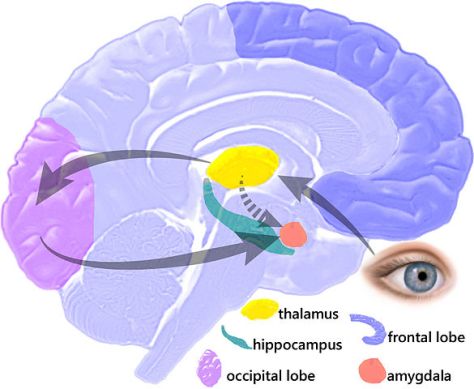Spiders, snakes and bees, oh my! These are among the typical fears that human’s face everyday. However, many high school and college-age students experience the fear of failing, failing both themselves and others.
Among those with this fear is Abigail Scardelletti, a freshman at Cabrini University, who is most afraid of failing academically.
“I just feel like it’s the end of the world even if it’s like a little quiz,” Scardelletti said.
Scardelletti does not know where her fear stems from but she said that her family emphasized the importance of having an education.

“I always put too much pressure on myself,” Scardelletti said, adding that she was involved in band as well as honors classes.
When faced with her fear, Scardelletti starts to panic and imagines all possible scenarios if she fails.
“My mind goes from ‘if I fail this test then, I’m going to fail the class; then if I fail the class then I’m going to fail the school year; if I fail the school year I’m not going to get a degree; if I don’t get a degree I’m not going to have a job; if I don’t have a job I’m going to die on the street somewhere,’” Scardelletti said.
The fight-or-flight response refers to the primitive instinct to either stay and fight off the threat or run from it.
“We become so singularly goal-directed in that moment, we may not process (and therefore cannot remember) any extraneous details,” according to an article in The Conversation.
Scardelletti experiences the fight response when faced with her fear of failure and stays with her school work as long as she needs to.
She starts by making a list of what she needs to do and what she can accomplish.
“I’ll do 30 minutes on studying and a 10-minute break or an hour studying and a 30-minute break and then I break it down and figure it out,” Scardelletti said.
Like Scardelletti, Angelica Lara, a junior at Sun Valley High School, is also afraid of failure.
“I feel like when I fail myself I fail everyone around me as well even if they don’t even notice it,” Lara said.
Now that she is in band and choir, she fears failing in performances. Lara has been involved in music since elementary school and is currently a section leader in her high school marching band.
“Now that I have this performance that I have to do everyday, it’s kind of scary and I don’t like messing up,” Lara said.
While doing a run-through for marching band recently she fell for the first time in the three years she has been involved in the program.
“I kind of felt like I messed up and I disappointed everyone,” Lara said.
Her fear of failing gives her anxiety before a performance. She shakes her hands to relieve the anxiety and calm herself down. She develops cold sweats and feels her whole body temperature decrease.
Lara’s reaction is called the freeze response. The freeze response is also known as “playing dead” or an extension of the surprise response. According to The Conversation, “you have been so overpowered, overwhelmed or trapped, there is no option to either flee or fight.” Humans do not make the decision to freeze but their instincts and primitive nature take over.
When she fell during the band run-through she felt like everything stopped and everyone was looking at her.
“I was kind of just frozen on the ground. I didn’t want to get back up,” Lara said, adding that it felt like she was down there for a full minute but in reality she was maybe on the ground for less than five seconds.
The Brain
Though many parts of the brain are involved when humans experience fear, the amygdala, located in the temporal lobe above the brainstem, is the captain of the “fear center.”
After gathering all the information from the various sensory systems, the amygdala sends signals to create emotional responses such as freezing, increased heart rate and the release of stress hormones.

“When you sense something potentially dangerous,” Bambi DeLaRosa, author of a recent study on how we process threats, said, “the amygdala sends excitatory signals to other parts of the brain, effectively saying, ‘Hey everyone, pay attention!’”
As the captain of the fear center, the amygdala also has lieutenants in other parts of t
he brain with important roles. The thalamus decides where the sensory information should go, the sensory cortex interprets the sensory data, the hippocampus stores and retrieves conscious memories and the hypothalamus activates the fight or flight response.
Adeline Mustico, the mother of two adult children, has had a recurring fear since she was young. She has the fear of being locked inside somewhere like a mall or store.
“Even though I know that I am okay and they’re not going to lock me in, it’s just a fear that comes over and I have to get out,” Mustico said.
She believes that the fear started when she was in kindergarten. Her mother dropped her off for school and when she went into the classroom there was no one there.
“I got really scared and I panicked and I ran outside and I didn’t know what to do,” Mustico said, adding that she got in trouble by her mother for getting a ride home with a stranger.
Mustico continued to have reoccurring dreams about what happened years after the incident, especially in September when school started. Though the dreams have ceased, she continues to feel anxious when in a store or mall that is nearing closing time.
Mustico is among the many who experience the flight response. She feels that she needs to leave the area quickly. Once she is out of the space she feels relief.
“I try to keep myself calm but most times I can’t. I start to know the time and I look at my watch and I try to rush out,” Mustico said, adding that she tries to hide her panic because she does not want anyone around her to know what she is going through.


